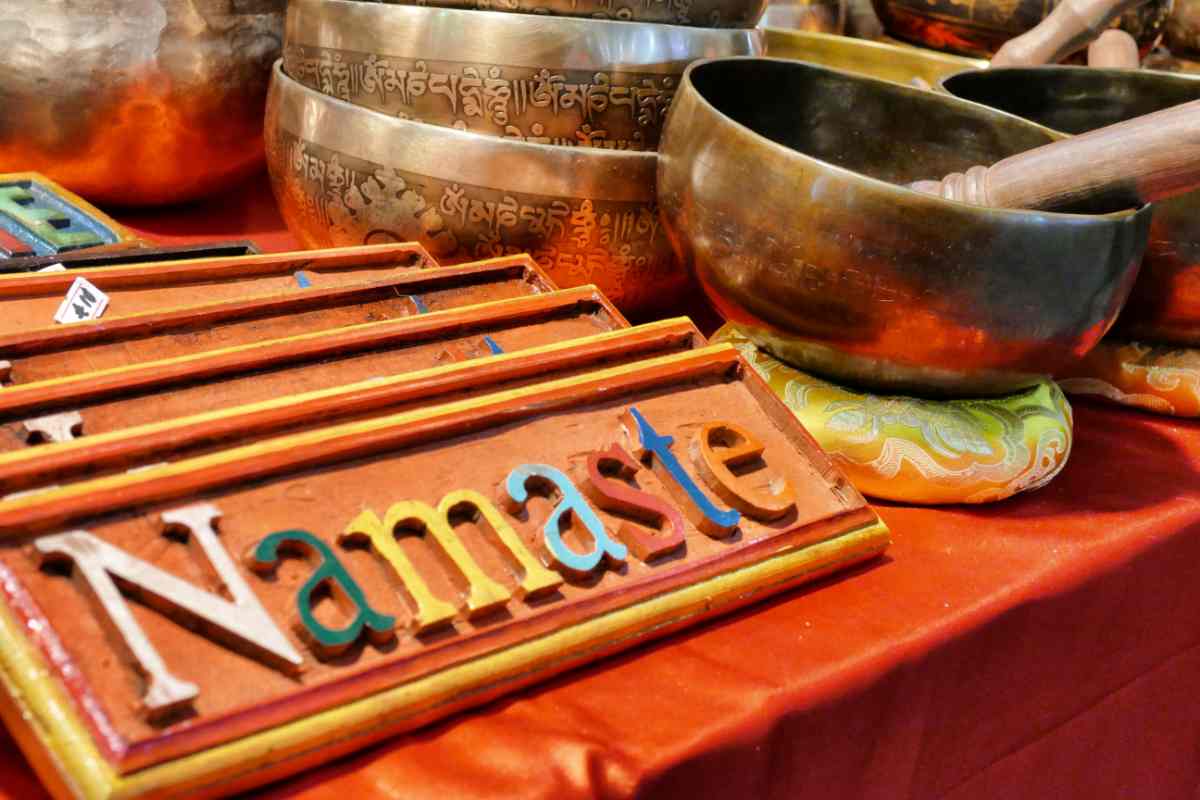
amaste" is a term that has gained widespread recognition and popularity in recent years, particularly in the context of yoga practice. But what is the meaning behind this ancient Sanskrit greeting, and where did it originate? In this article, we will delve into the rich history and cultural significance of the "Namaste" symbol, examining its definition, various interpretations, and current usage across different cultures.
Where did the term “Namaste” originate?
“Namaste” is derived from the ancient Sanskrit language, which has its roots in the Indian subcontinent. The term is a combination of two Sanskrit words: “namas,” which means “to bow,” and “te,” which means “to you.” The origins of the Namaste gesture can be traced back to ancient Indian culture and tradition, where it has been used as a respectful form of greeting for thousands of years.
What is the definition of the word “Namaste?”
At its core, “Namaste” is a respectful form of greeting, expressing reverence and acknowledgement of the divine in another person. It is commonly accompanied by a physical gesture, which involves placing the hands together at the heart, bowing the head, and closing the eyes. This gesture is called the “Anjali Mudra” or “Prayer Mudra.” The Namaste gesture symbolizes the belief that the divine or the true essence of the self resides within each person, and by offering this greeting, one is acknowledging and honoring that essence in another.
Does the term “Namaste” mean different things depending on context?
While the essential meaning of “Namaste” remains consistent, its interpretation and usage can vary depending on the cultural and spiritual context in which it is employed. Here are a few examples of how the meaning of “Namaste” can shift depending on the context:
- In Indian culture: In India, “Namaste” is a common greeting used in daily life, regardless of one’s religious or spiritual beliefs. It is a polite and respectful way to acknowledge the presence of another person, often used when meeting, departing, or expressing gratitude.
- In yoga practice: In the context of yoga, “Namaste” takes on a deeper spiritual significance. It is often used at the beginning and end of a yoga class as a way to connect with fellow practitioners and the teacher, symbolizing mutual respect and the shared intention of spiritual growth.
- In spiritual contexts: For some spiritual seekers, “Namaste” can represent an expression of unity and oneness with all beings. In this context, the greeting serves as a reminder of the interconnectedness of all life and the shared divine essence that exists within everyone.
Which cultures use the term “Namaste” today?
Although “Namaste” has its origins in the Indian subcontinent, its usage has expanded across the globe, thanks in part to the increasing popularity of yoga and meditation practices. Here are some examples of how “Namaste” is used in various cultures today:
1. India and Nepal
In India and Nepal, “Namaste” remains a common form of greeting in daily life, transcending religious, ethnic, and linguistic boundaries. It is often used as a sign of respect, gratitude, and humility, particularly when interacting with elders or individuals of higher social status.
2. Western yoga communities
In Western yoga studios and communities, “Namaste” is frequently used at the beginning and end of classes as a way to connect with fellow practitioners and express gratitude for the shared practice. This usage has helped to popularize the term and its associated gesture in countries outside of the Indian subcontinent.
3. Global spiritual communities
The term “Namaste” has also gained popularity among spiritual seekers and practitioners around the world, regardless of their specific religious or spiritual affiliations. For many, “Namaste” serves as a universal expression of love, respect, and unity, embodying the concept of interconnectedness and the recognition of the divine in all beings.
4. In popular culture
As awareness of yoga and mindfulness practices has grown, “Namaste” has also made its way into popular culture. It can now be found on clothing, accessories, and home décor items, often serving as a symbol of peace, spirituality, and well-being.
Final Thoughts on “Namaste”
The “Namaste” symbol is a beautiful expression of respect, reverence, and the recognition of the divine essence that exists within every individual. While its roots can be traced back to ancient Indian culture and the Sanskrit language, the term has evolved and spread across the globe, taking on new meanings and interpretations depending on the context in which it is used.Today, “Namaste” serves as a powerful reminder of our shared humanity and the interconnectedness of all beings. Whether used as a simple greeting in daily life, a gesture of gratitude in a yoga class, or a profound expression of spiritual unity, “Namaste” carries a timeless message of love, respect, and the acknowledgement of the divine within each of us.


